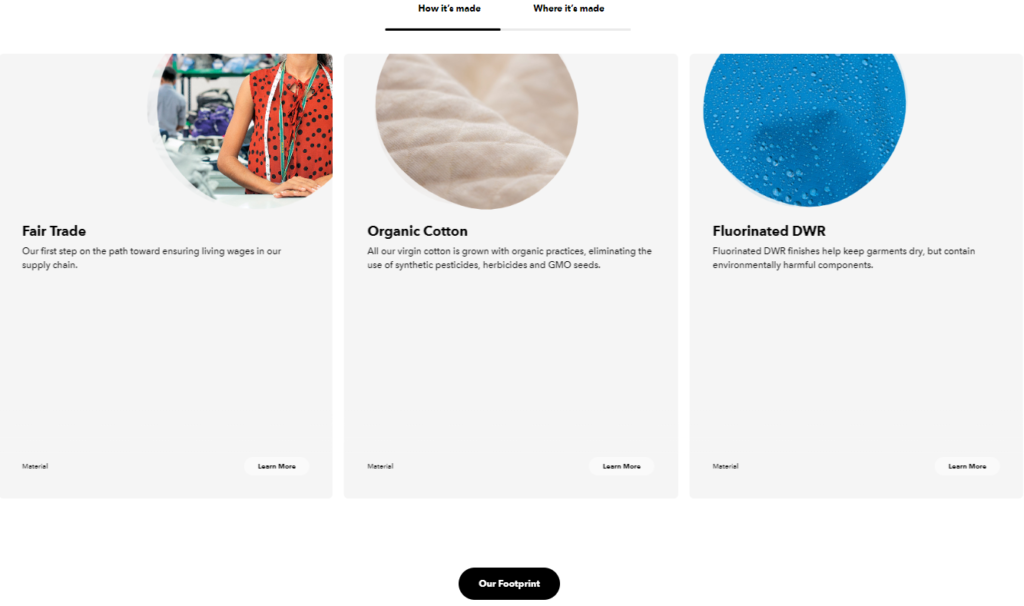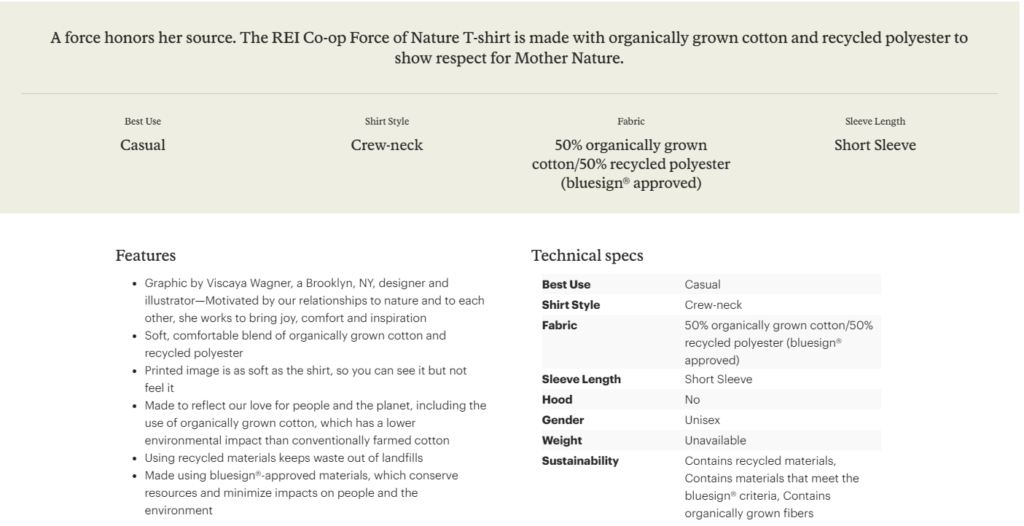Annually, the fashion industry is responsible for 3,290 million tonnes of CO2e, and consumes over 79 billion m3 of fresh water. That’s not to mention the land area it takes to grow, process, sell, and store their products. Exact figures may vary on the exact environmental impact of fashion, but it is certain that fashion is a huge contributor to global warming. We as consumers have a responsibility to make decisions that support the future of our earth. However, we can’t eliminate all of fashion together. It is what clothes us and how we are able to express ourselves. I scoured through more than 50 fashion sites and here are the most *sustainable and affordable men’s fashion brands.
*An asterix applies because there isn’t a universal standard of what makes a brand or company sustainable. Each of these companies do something to reduce natural resource consumption.
Affordability
There’s also another debate of what affordability means. Even the cheapest sustainable fashion brands won’t have the same affordability as fast fashion. Therefore, don’t expect the same affordability as fast fashion with these brands. Additionally, Everyone has a different understanding on what affordability means to them. Myself and a small group of people I sampled agreed that an affordable price range is as follows We understood we would have to pay a premium for high sustainability and quality.
T-Shirt: $25-$40
Shirt: $30-$45
Pants & Shorts:$40-$60
Hoodie & Sweaters: $30-$50
Jackets & Outerwear: $70-$100
1. Thrift Store or Consignment Shops
Go to your local thrift store, like Salvation Army or Goodwill, and browse the clothing racks. There’s usually a gem or two in there. The only issue is that it might be difficult to find something specific. Alternatively, you can check out consignment shops like Buffalo Exchange or Crossroads. They focus their inventory on current style trends. Buying used clothes decreases your carbon footprint. It lowers the amount of natural resource consumption that it would take to make a new piece of clothing and dispose of old ones.
Price Range
Extremely Varied

2. Online Resale Shops
Poshmark, Depop, Mecari, Ebay and many others specialize in online users selling their used clothes. Similar to thrift stores and consignment shops, you’re decreasing your carbon footprint by not purchasing a new piece of clothing. Additionally, you’re giving an old piece of clothing a new life so it doesn’t end up in landfills.
Price Range
Extremely varied
3. Toad&Co
I like Toad&Co because they use a lot of prints and designs. They go beyond the basics of your simple solid color designs. As far as sustainability, they use a number of sustainable fabrics, including recycled fabric. Additionally, they have their Renewable Workshop where they repair and resell their own clothes for a discount. The exact figures of how many garments they’ve recycled, pounds of textiles, CO2 offsets and water they’ve saved can be found here. They have a reusable shipping system so you’re not using single use plastics or cardboard in the shipping process. They also partner with local environmental organizations to raise funds, volunteer or raise awareness of different organizations.
Price Range
T-Shirts & Shirts: $30-$70
Pants & Shorts:$55-$100
Jackets & Sweaters: $50-$125
4. Pact
Pact advertises that they use organic cotton, The production of all these materials results in lower water usage, no toxic chemical or toxic dyes. However, it was difficult to find further explanation of how they do so.
Price Range
T-Shirts & Shirts: $20-$35
Pants: $35-$60
Sweaters & Hoodies: $40-$95
5. tentree
They are called tentrees because for every piece of clothing you purchase, they’ll plant ten trees. The day I checked the site they had planted over 42 million trees. They’ll also give you a code so you can track where your tree has been planted and see where they’ve focused their tree planting. They promise to source only the most ecofriendly materials. They also teamed up with GreenStep to analyze the environmental footprint of their products which they call the ecolog. It’s extremely well documented and quantifiable proof of their environmental consciousness. Their supply chain is transparent and you can follow their manufacturing process here.
Price Range
T-Shirts-$22-$45
Shirts: $26-$60
Pants: $48-$90
Hoodies & Sweaters: $42-$75
6. Patagonia
Patagonia does a number of things to promote activism and environmentalism. They feature activism stories, earth tax themselves 1%, use environmentally friendly material and more They also have a program called “Action Works” which helps their consumers get involved with activism in their area. At the bottom of every product, they describe how it’s made, where it’s made, and you can learn more about their environmental footprint (see below).
Price Range(Too many products to give a price range for. Here’s a couple to give you an idea)
T shirts: $36-$60
Pants & Shorts: $65-$200

7. Rapanui
One of the only issues I have with Rapanui is that all the prices are in pounds (£) and I haven’t found a way to convert it to dollars($). However,a quick google search will make the conversion easy for you. Their organic farming practices are very strategic in maximizing the biodiversity of their farms and utilizing little water. The processing process uses every part of the cotton plant. The parts that aren’t used for clothes are used for cow feed or vegetable oil. All the water they use in their dyeing process is filtered and reused again. Their factories maximize renewable energy and products are shipped in recyclable, plastic free materials
Price Range
T-shirts: $15-$30
Hoodie & Sweaters: $40-$60
Jackets: $80
8. Know The Origin (KTO)
My only qualm with KTO is that the selection is small (t-shirts, hoodies, and sweaters). They do sell a wide variety of clothes, but they’re from other brands. KTO uses organic cotton grown without synthetic fertilizer or using GMO seeds. They don’t use toxic dyes so they’re able to filter the water for it to be reused. They aim for full transparency of their products and have their own blog where they write about global issues.
Price Range
T-Shirts: $25-$42
Hoodies & Sweaters: $55-$65
9. CHNGE
CHNGE is the only company I was able to find that 100% offsets their carbon emission and had t-shirts under $50. They also utilize organic cotton that utilizes less energy and water than those of conventional fashion. Here are some more of their exact figures. Their products are not only affordable, but their graphics and designs are really cool.
Price Range
T-Shirts & Shirts: $25-$45
Hoodies & Sweatpants: $59
10. REI Co-op
REI is a store that specializes in outdoor recreation. They sell a number of brands, including some on this list. However, they also have their own product. It’s also usually a little cheaper than some of the other brands they sell while still upholding excellent quality. They try their best to keep bluesign certified. It’s a certain set of criteria achieved to make sure the product meets ethical standards of practice, including sustainability. Read more about their explanation here. Each of their products also has descriptions of its sustainability within its technical specs (see below). In addition to the clothes and products they sell, they also offer classes, used products, services and adventures..
Price Range(Too many products to give a price range for. Here’s a couple to give you an idea)
Tshirts: $12-$80
Pants: $24-$229

11. Jack Wolfskin
Jack Wolfskin is a German company whose aesthetic is similar to Patagonia or REI. Most of their clothing is outdoor wear. They are the only company on this list that are addressing the environmental issues of transporting their products. Germany is a leading country in renewable resources. Therefore, much of their production is powered on renewable energy. They’re focused on environmental protection, social responsibility, sustainable practices, and pioneering new technology to increase the sustainability of their clothes.
Price Range
T-Shirts & Shirts: $20-$70
Outerwear: $55-$300
Pants & Shorts: $45-$100
Final Words
We aren’t trying to guilt you into changing your spending habits. There is definitely a sense of privilege that comes with being able to spend more than $15 dollars on a T-shirt. We understand that some of our readers are college students or young adults drowning in student debt. However, if you are able to, just consider these brands the next you’re thinking about spending some money on clothes.
